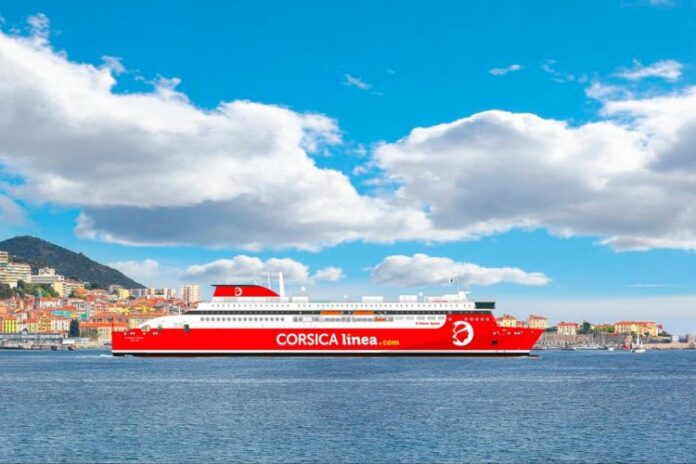Stena RoRo has placed an order for yet another RoPax-class E-Flexer vessel from the Chinese shipyard CMI Jinling (Weihai). The vessel will be delivered in the first quarter of 2026 to Corsica Linea and will operate between Marseille and Corsica.
“The arrival of this new LNG vessel in the fleet is a strong signal that is in line with the ambitious course set for Corsica Linea the coming years: to become the most modern shipping company in the Mediterranean by 2030. This new and highly efficient ship will be an important factor in our green transition and a part of our objective to reduce our CO2 emissions with 40 % by 2030”, says Pierre-Antoine Villanova, CEO of CORSICA linea.
The E-Flexer series is based on a concept with larger vessels than today’s standard RoPax ferries, and is very flexible. Each ship is tailored to the customers’ needs, both commercially and technically. Optimized design of the hull, propellers and rudders help to ensure that the E-Flexer vessels are at the forefront when it comes to sustainability, performance and cost.
The vessels’ engines are of the multi-fuel type and can run on LNG, conventional marine fuel (MGO) or biodiesel. The vessels have been designed in line with future environmental requirements and, through their technical design, can meet both existing and future international requirements by a wide margin. The vessels will be designed with the classification society notation “Battery power” which means that in the future the vessels will also be able to utilize batteries as a means of propulsion.
“This ship is a further development of our previous RoPax concepts, where the focus on sustainability and future-proofing has been a top priority,” says Per Westling, Managing Director, Stena RoRo. “Through the further development and optimization of the hull shape in combination with multi-fuel engines and battery hybrid technology, ordering new vessels will be the most important and powerful measure to reduce CO2 emissions from shipping in the future.”



